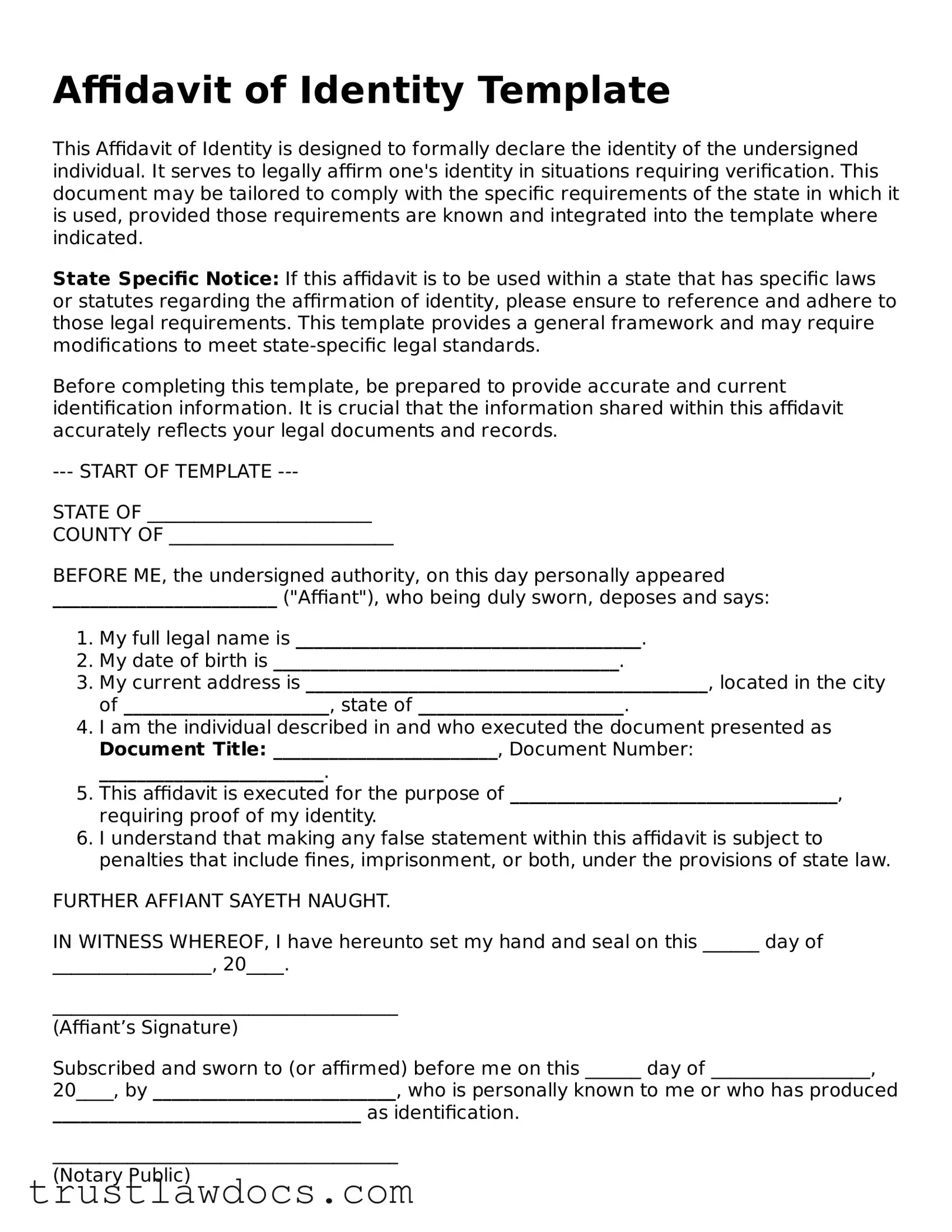Affidavit of Identity Template
This Affidavit of Identity is designed to formally declare the identity of the undersigned individual. It serves to legally affirm one's identity in situations requiring verification. This document may be tailored to comply with the specific requirements of the state in which it is used, provided those requirements are known and integrated into the template where indicated.
State Specific Notice: If this affidavit is to be used within a state that has specific laws or statutes regarding the affirmation of identity, please ensure to reference and adhere to those legal requirements. This template provides a general framework and may require modifications to meet state-specific legal standards.
Before completing this template, be prepared to provide accurate and current identification information. It is crucial that the information shared within this affidavit accurately reflects your legal documents and records.
--- START OF TEMPLATE ---
STATE OF ________________________
COUNTY OF ________________________
BEFORE ME, the undersigned authority, on this day personally appeared ________________________ ("Affiant"), who being duly sworn, deposes and says:
- My full legal name is _____________________________________.
- My date of birth is _____________________________________.
- My current address is ___________________________________________, located in the city of ______________________, state of ______________________.
- I am the individual described in and who executed the document presented as Document Title: ________________________, Document Number: ________________________.
- This affidavit is executed for the purpose of ___________________________________, requiring proof of my identity.
- I understand that making any false statement within this affidavit is subject to penalties that include fines, imprisonment, or both, under the provisions of state law.
FURTHER AFFIANT SAYETH NAUGHT.
IN WITNESS WHEREOF, I have hereunto set my hand and seal on this ______ day of _________________, 20____.
_____________________________________
(Affiant’s Signature)
Subscribed and sworn to (or affirmed) before me on this ______ day of _________________, 20____, by __________________________, who is personally known to me or who has produced _________________________________ as identification.
_____________________________________
(Notary Public)
My commission expires: ___________________
--- END OF TEMPLATE ---
Remember to review and ensure all information is correct and complete before signing. Once signed, this affidavit will serve as a legal document affirming the identity of the affiant. For further guidance or clarification on using this template, consider seeking legal advice.
